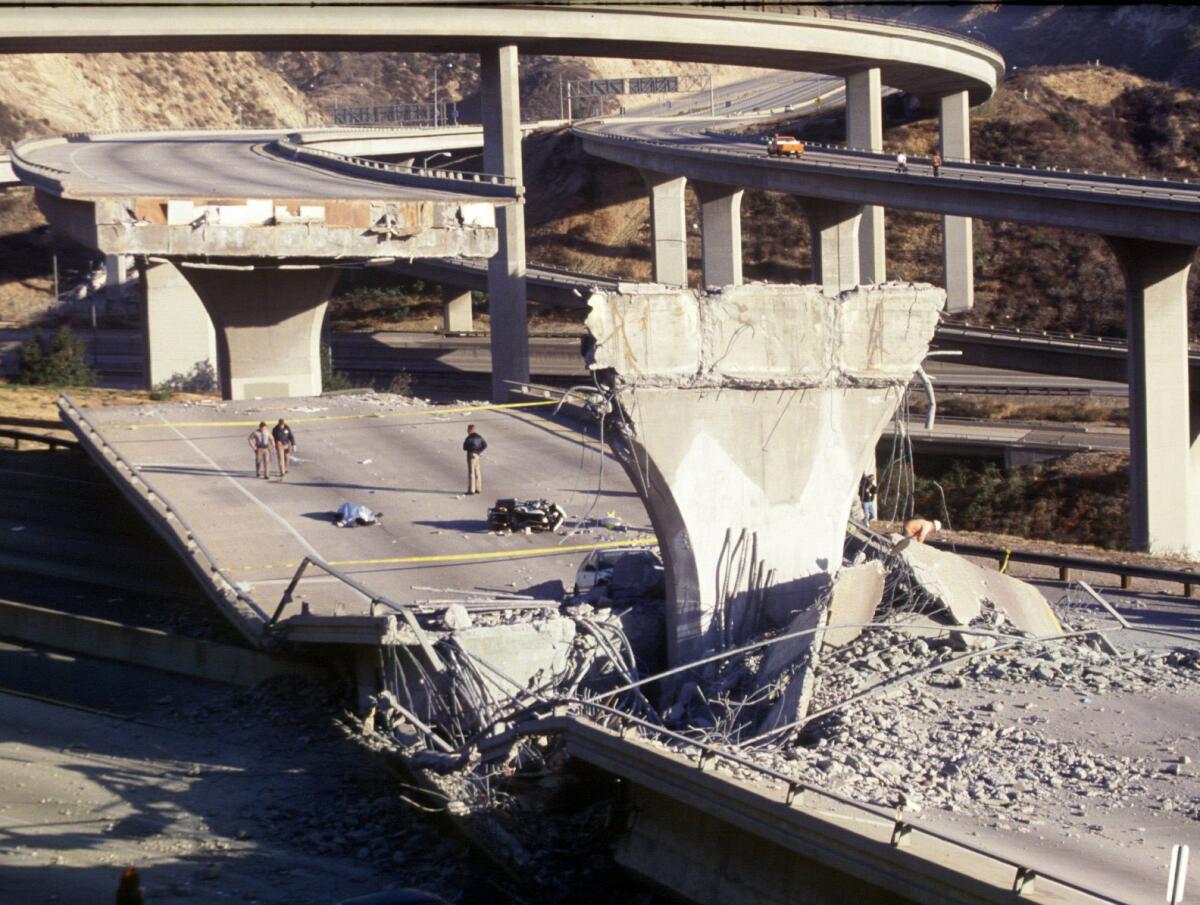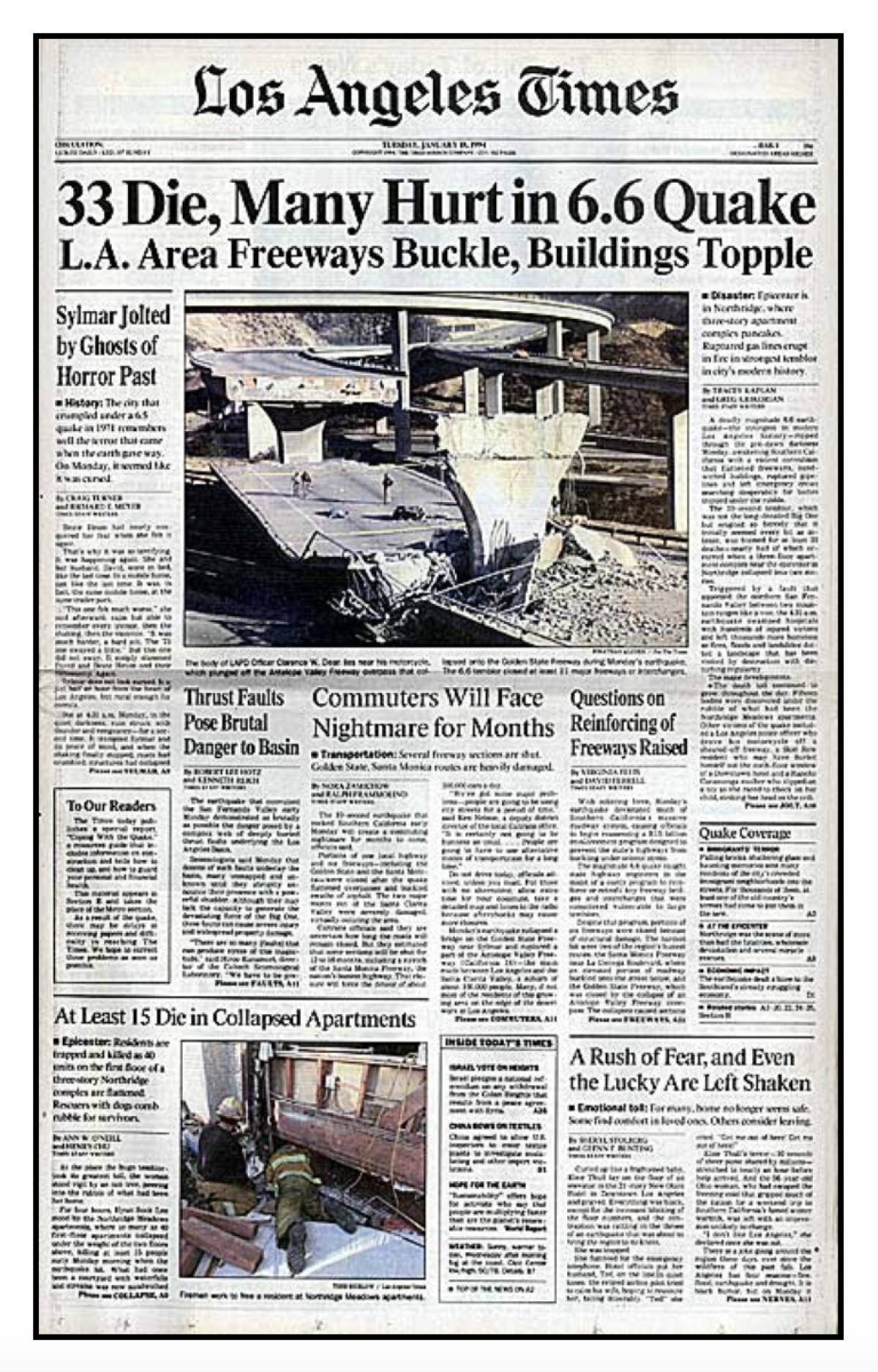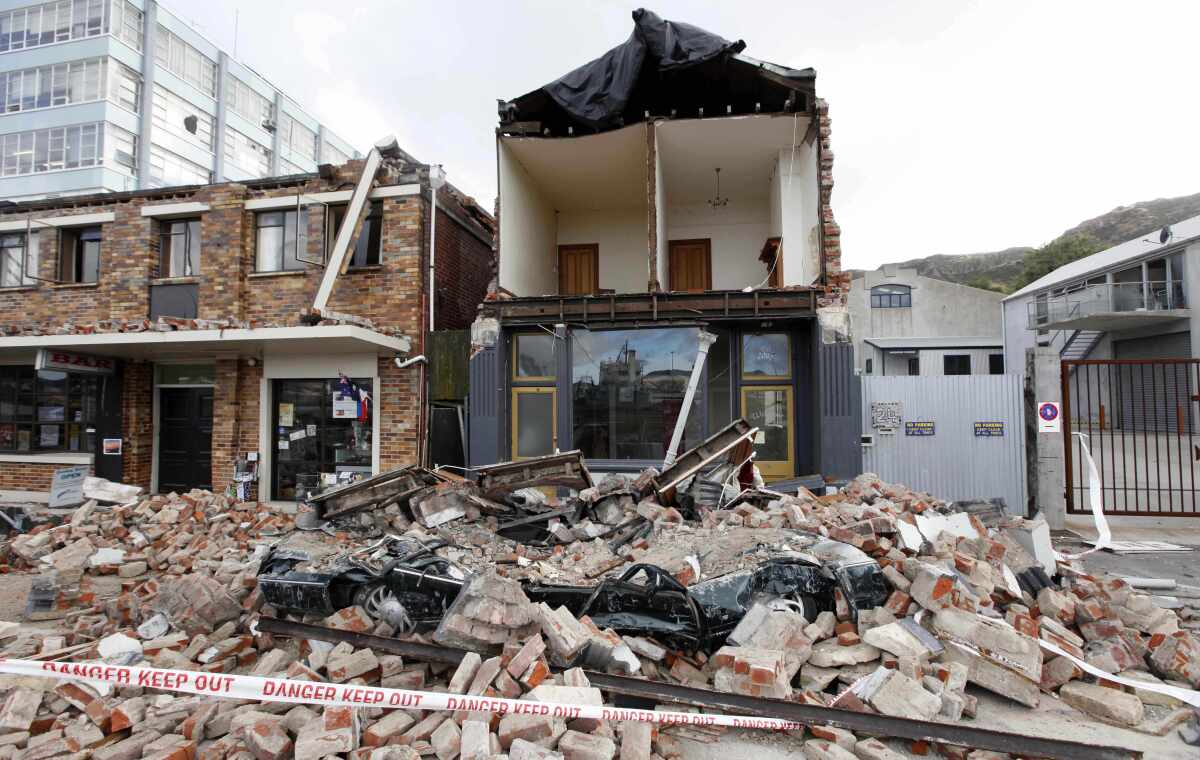L.A.’s most destructive earthquake sent me into therapy. Here’s what I learned

- Share via
Hi, and welcome back to the L.A. Times Unshaken newsletter. I’m Shelby Grad, The Times’ deputy managing editor for news.
The hidden mental health toll earthquakes take
Thirty years ago, I spent every Tuesday morning at my therapist’s office trying to understand why it seemed like the ground never stopped shaking.
At the time, seeking professional help for emotional challenges wasn’t as widely accepted, and the term “trauma” seemed reserved for people who had experienced something truly horrible.
Yet the morning of Jan. 17, 1994, left me damaged.
I was asleep at 4:31 a.m. when the magnitude 6.7 Northridge earthquake knocked me out of bed. The framed posters in my studio apartment crashed to the ground. Plates and dishes in my kitchen shattered, and the refrigerator moved a foot.
My experience was shared by millions of Southern Californians, and many had it much worse than me.
So many others brushed it off, but not me. For weeks after, I felt quakes that did not exist. My nightmares were filled with images of buildings collapsing on me.
One night while picking up dinner at my favorite teriyaki joint, the ground moved. “EARTHQUAKE!” I screamed, knocking my jumbo beef bowl and large Diet Coke to the floor as I tried to dive under a table. That’s where the owner found one of his most loyal customers, scattered pieces of glazed meat, rice and ice cubes littering the floor next to me. “Buddy, it was just a truck driving by,” he said in a calm voice.
And that is what sent me into therapy, with many hours spent discussing why the earthquake was messing with my mind.
Physical damage gets lots of attention after a quake. Mental, not so much.
This year marked the 30th anniversary of the Northridge quake — the deadliest, most destructive and most expensive temblor ever to hit Southern California. We’ve made significant progress since then: stronger building codes, the retrofitting of dangerous buildings, more reliant hospitals, quake early warning systems and stronger freeways and bridges.
But the mental health aspect of surviving a huge earthquake gets less attention.
Weeks after the Northridge quake, a Los Angeles Times poll of people living near the epicenter found that half called it one of the worst experiences of their lives, and nearly 1 in 3 said the psychological aftershocks continue to be severe. Among those polled, 1 in 4 said they suffered lingering psychological trauma.
And as my colleague Lorraine Ali noted, these feelings aren’t just about Northridge: “My mom’s side of the family runs three generations deep here, and they all had their traumatizing quake stories. My grandmother often spoke about the 1933 Long Beach quake (magnitude 6.4). My parents’ Big One was the 1971 Sylmar quake (6.6).”
California has not experienced a truly devastating quake in an urban area since 1994, so the trauma associated with such shaking has faded from memories.
But not elsewhere.
Earthquake trauma is common on major faults around the world
Rong-Gong Lin II, The Times’ quake expert, went to Christchurch, New Zealand, in 2019 for a series on the long-lasting ruptures from a massive temblor there. He found people still struggling with losses, terror and anxiety nearly a decade later. Among the findings:
- Studies of 76,000 victims of earthquakes calculated that roughly 1 in 4 survivors experienced post-traumatic stress disorder.
- More brain-calming drugs — a class of drugs known as benzodiazepines that includes Xanax and Valium — were dispensed after the earthquake.
What are New Zealand’s lessons for California? Taking the mental health toll of disasters seriously, checking for signs of mental deterioration in friends and loved ones, seeking help for depression and anxiety and creating a shared sense of purpose and positivity. Officials launched a public outreach campaign designed to let people know that it was fine to feel depressed and that help was available. They also tried to help people focus on the strides made in rebuilding the city instead of dwelling on the destruction.
Time has helped with some quake anxiety
When I started therapy, I told my shrink one reason I felt so rattled was because I had the misfortune of being at the wrong place at the wrong time — repeatedly.
I was visiting family in L.A. when the 1987 Whittier Narrows quake hit. I was powering through deadline in the Spartan Daily newsroom at San Jose State when the 1989 Loma Prieta quake rocked Northern California. And then I was back in L.A. when the Northridge quake struck.
We talked about my seismic anxiety but fairly quickly moved onto bigger matters in my life. My therapist wondered whether the quake triggered other longstanding issues (being closeted, weighing 430 pounds, struggling to get my journalism career off the ground).
Therapy led me to a diet doctor, to a Prozac prescription and eventually to a gym. The phantom quakes eventually stopped, but I’m not sure whether therapy or drugs or the treadmill had anything to do with it. I wonder whether my mind just moved onto new worries.
Still, some seismic anxiety still haunts me. There are nights when I go to bed certain that 4:31 a.m. will bring another jolt. Stuck in traffic atop a towering freeway connector, I look down and wonder whether all those retrofits would actually save me if this is when the Big One hits.
Some people say quake fears are healthy; they force us to plan, create safer spaces, make sure those quake kits are up to date.
Maybe.
But there are still many days I wish I had the luxury of denial.
Of course, there is no denial when you live in earthquake country.
Last year’s massive temblors in Turkey and Syria, which killed at least 53,000, is a grim reminder of what true earthquake trauma looks like. Hassan Moath was at a Syrian shelter with his 9-year-old son after losing everything in the quake. “With any loud voice or movement, he gets scared. Sometimes when he is asleep he wakes up and says ‘earthquake,’” the father told Reuters last year.
Experts have said countries like the United States, Japan and New Zealand have an advantage because of stronger building codes and seismic safety programs. But massive quakes would still be devastating, and preparation is one of the few things that brings peace of mind.
If reading this newsletter brings you anxiety, here are some ways you can put it to good use:
Read L.A. Times guides to preparing for earthquakes
Sign up for Essential California
The most important California stories and recommendations in your inbox every morning.
You may occasionally receive promotional content from the Los Angeles Times.






